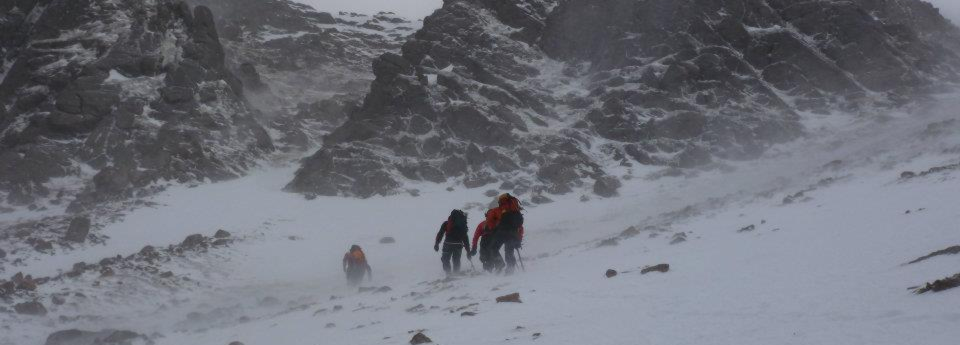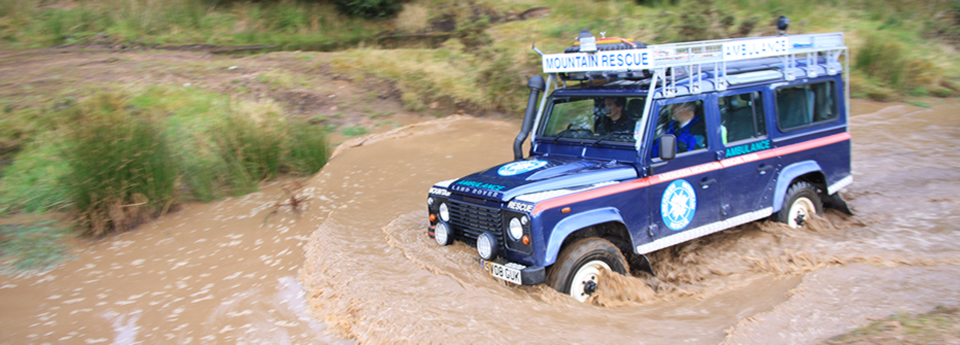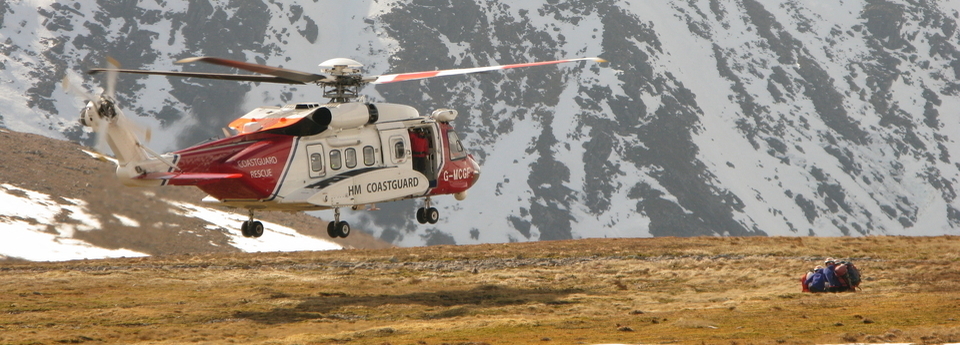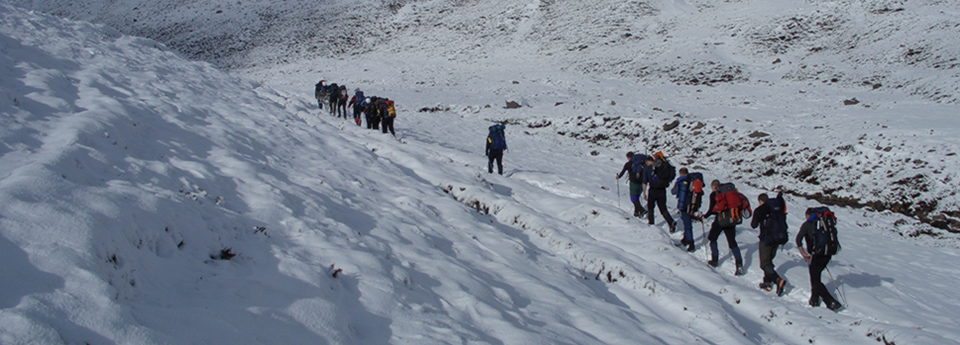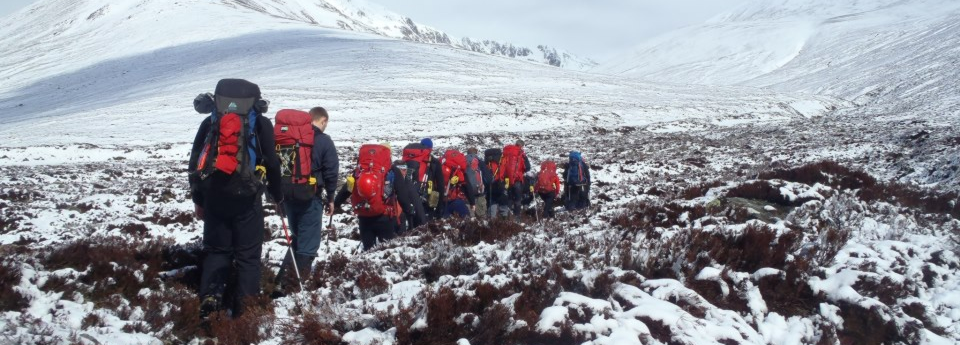Team Leaders' Report 2010
For a number of years now I have started my annual report with a comment usually bemoaning the lack of snow during the winter months and the impact that this has had on climbing and ski-ing. Although these snowless winters have often provided good hill walking days, they have lacked the challenge so traditionally associated with Scottish winters. Well as they say be careful what you wish for – the 2009-2010 winter turned into one of the snowiest winters for decades and indeed as we head towards the end of 2010 the early indications are that the coming winter may see us surpassing the levels of snow found last year.
January saw very significant accumulations of snow in the Cairngorms and some wonderful ski touring days, where skis were put on at the roadside and not removed again until returning to the car. Many folk who had given up the hope of ever being able to repeat some of the classic Cairngorm ski tours undertaken in the seventies and eighties were once again out in force, and the amazing snow cover encouraged many new comers to try their hand at a day out on skis.
The quantities of snow to be found in some places in the Cairngorms was quite unbelievable and I regularly measured, using a twelve foot long avalanche probe and a shovel, snow depths that must have been approaching twenty feet. The fact that it remained cold for such a long period of time meant that in many places the snow did not get a chance to consolidate and this of course made for difficult walking conditions.
Interestingly for those who were able to get out and about on skis the major risk factor proved to be the threat of avalanches. We saw some truly huge avalanches this year and one in particular off the north side of Glas Maol generated a considerable amount of interest with a head wall in excess of ten feet – something on a scale more normally associated with mountainous areas such as the Alps rather than the Cairngorms. Fortunately we saw few incidents involving serious avalanches, although in the course of one training exercise in early March whilst traversing the West side of Derry Cairngorm we did encounter what can really only be described as significant crevasses – we gave them a very wide berth.
Rescues and Callouts
In the early part of the winter the huge quantities of unconsolidated snow prevented people from actually getting into the hills, and given the avalanche potential this was probably no bad thing. We had a number of memorable and exhausting days when the effort of wading through waist deep snow prevented us from getting into places like the corrie of Lochnagar. This of course meant that there were generally less folk in the hills during the early part of the winter and indeed the continuing snowfall right through January and February meant that many hills in the central Cairngorms saw virtually no one on them for weeks on end. Indeed even local hills such as Bennachie proved quite a challenge on foot as we discovered one particularly snowy weekend when we opted to do some avalanche training close to home.
The heavy snowfall was almost certainly a factor in reducing the number of winter incidents, and it was not until Easter that we began to see an increase in the number of walkers and climbers in the hills. There were a number of quite minor incidents during the late spring and early summer with several callouts for overdue walkers – all of whom turned up none the worse for their extended day out. In many cases these incidents simply reflected the fact that people were not factoring in the difficult walking conditions when planning routes. This is perhaps not very surprising since we have had few winters in the past twenty years where snow conditions have had potentially such a major impact on route selection and walking conditions.
Team Membership
In the course of 2010 we saw a very significant influx of new folk to the Team. After having had a very stable Team membership for quite a number of years we saw several experienced Team members decide to hang up their mountain rescue boots in the course of 2009. This prompted us to take a good hard look at how we recruit new Team members, and as a result of some good publicity through both our own website and with assistance from the Cairngorm Club and their newsletters we have been fortunate in being able, in the course of 2010, to attract some first class folk to our ranks. Although I hesitate to be ageist about it we have also managed to significantly reduce the age profile of the Team – something I have been anxious to do for some time.
Although our new members all have reasonable hillwalking and mountaineering experience we are of course busy working with them to develop their mountain rescue skills. We have introduced a much more formal training programme for our new recruits and this has the benefit of ensuring that the training they undergo during their probationary period is both thorough and comprehensive.
Our current Team strength is thirty-five and we have been very fortunate in that we have been able to recruit three doctors to the Team. They all come with different medical specialities, but their combined input will, I have no doubt, lead to a significant raising of the bar in terms of our casualty handling and first aid skills.
Membership of a mountain rescue team is quite a commitment and I am encouraged to see that there are still folk out there who are prepared to give their time and energy to help like minded individuals who have the misfortune to get into trouble on our local hills. Of course as members of a mountain rescue team we are acutely aware that accidents in the hills can befall any of us, and although experience and expertise count for a lot they do not remove the possibility that one day you might find yourself on the sharp end of an accident.
Training and Equipment
Training is always a major focus for us in trying to make sure that we maintain the highest professional standards when involved in rescues. In the course of 2010 we undertook joint training events with Braemar and Grampian Police mountain rescue teams and also with the RAF Search and Rescue Helicopters. Several Team members attended avalanche and technical rigging courses and they have on their return been able to pass on to other Team members some of the latest techniques and thinking in these areas.
We have also in the course of 2010 placed quite an emphasis on driver training within the Team. Since almost all of our training and callouts require us to use our vehicles both on and off road we have introduced a programme of driver training which we believe will ensure an appropriate standard for all Team members who might find themselves being tasked with driving one of our vehicles. We have also provided all Team members with training on using vehicle winches, since from time to time we have had to use these to extract vehicles from ditches.
Overall I think that we maintain a very high standard of training across all aspects of mountain rescue, and it is very encouraging to see our new Team members develop their skills as they work closely with the more established members of the Team on exercises and callouts.
The move, in the course of 2010 to increase the size of the Team has of course had implications in relation to the running costs of the Team. More Team members means that we have had to purchase increased amounts of equipment and this has placed a very significant strain on our operating budget. We have over the past five years been trying to phase the replacement of key items of equipment such as waterproofs; however increasing costs both in terms of equipment and fuel will, I have no doubt, be a major cause for concern in the course of 2011 and beyond.
And Finally
Finally I would like to thank all the members of the Team, past and present, for their dedication and commitment to mountain rescue. The running of a successful mountain rescue Team is a result of a considerable amount of work on the part of many people. Team members put in an extraordinary amount of effort and time to maintain the equipment, vehicles and bases that we rely on, and it would be hard to adequately thank them for their efforts.
I would also like to say a special thanks to those people, be they family or friends, who provide the behind the scenes support for Team members – we are all very conscious that without your support and tolerance, maintaining our involvement in mountain rescue would be extremely difficult.
I would in conclusion like to pay a very special tribute to Nick Jack, a member of our Association who died in 2010. Nick had during his time in the Association been both Chair and Vice Chair and his passionate support and encouragement for the Team was something that I very much valued. Nick had many years ago been involved with the Cairngorm Mountain Rescue Team and he had considerable insight in terms of the operation of the Team and the contribution made by its members. Nick will be sorely missed both for his support at Association meetings and for his help each year during our sponsored walk when he was invariably to be found at the tail end of the walk offering encouragement and support for those walkers who were finding it hard going.
Mario Di Maio
Team Leader
